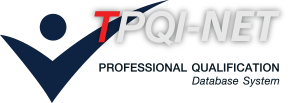หน่วยสมรรถนะ
Interpret work health and safety practices in aviation maintenance.
สาขาวิชาชีพการบิน
รายละเอียดหน่วยสมรรถนะ
| 1. รหัสหน่วยสมรรถนะ | AVT-BALS-198A |
| 2. ชื่อหน่วยสมรรถนะ | Interpret work health and safety practices in aviation maintenance. |
| 3. ทบทวนครั้งที่ | / |
| 4. สร้างใหม่ |
|
ปรับปรุง |
|
| 5. สำหรับชื่ออาชีพและรหัสอาชีพ (Occupational Classification) | |
|
7232 Aircraft engine mechanics and fitters |
|
| 6. คำอธิบายหน่วยสมรรถนะ (Description of Unit of Competency) | |
| This skill unit covers the skills and knowledge necessary to comply with work health and safety (WHS) regulation and work safely in aircraft maintenance areas. It requires the application of relevant WHS practices to aviation maintenance workplaces to ensure his own safety and that of others in the workplace. Workplaces include flight line or tarmac, hangars and workshops. Maintenance activities include all planned and unplanned maintenance on fixed planes or rotary wing and components thereof. The work can be done individually or as part of a team. | |
| 7. สำหรับระดับคุณวุฒิ |
| 1 | 2 | 3 | 4 | 5 | 6 | 7 | 8 |
|---|---|---|---|---|---|---|---|
| 8. กลุ่มอาชีพ (Sector) | |
| 7232 Aircraft Mechanics | |
| 9. ชื่ออาชีพและรหัสอาชีพอื่นที่หน่วยสมรรถนะนี้สามารถใช้ได้ (ถ้ามี) | |
| N/A | |
| 10. ข้อกำหนดหรือกฎระเบียบที่เกี่ยวข้อง (Licensing or Regulation Related) (ถ้ามี) | |
| ICAO Doc 7192 / EASA Part 66 | |
| 11. สมรรถนะย่อยและเกณฑ์การปฏิบัติงาน (Elements and Performance Criteria) |
| หน่วยสมรรถนะย่อย (EOC) | เกณฑ์ในการปฏิบัติงาน (Performance Criteria) | รหัส PC (ตามเล่มมาตรฐาน) |
รหัส PC (จากระบบ) |
|---|---|---|---|
| 101301.01 Interpret safe work practices , reporting procedures for workplace hazards. |
101301.01.01 Able to interpret and understand relevant regulatory and enterprise policies and procedures that identify the requirements for conduct of safe work, to identify Workplace housekeeping measures in accordance with standard enterprise procedures, to identify and understand the use of personal protective equipment (PPE) and maintenance measures are interpreted and understood according to regulatory and enterprise procedures. |
101301.01.01 | 199035 |
| 101301.01 Interpret safe work practices , reporting procedures for workplace hazards. |
101301.01.02 Able to identify and understand safety signs and symbols, and their directions observed in accordance with enterprise and safety requirements, to identify workplace hazards correctly and able to interpret and understand reporting procedures according to standard enterprise procedures. |
101301.01.02 | 199036 |
| 101301.02 Interpret emergency procedures. |
101301.02.01 Able to contact the appropriate personnel and emergency services in the event of an accident using appropriate method according to enterprise requirements. |
101301.02.01 | 199037 |
| 101301.02 Interpret emergency procedures. |
101301.02.02 Able to interpret and understand emergency and evacuation procedures to ensure safe conduct of personnel according to enterprise procedures, correctly identify the use of emergency equipment according to regulatory or enterprise procedures. |
101301.02.02 | 199038 |
| 12. ความรู้และทักษะก่อนหน้าที่จำเป็น (Pre-requisite Skill & Knowledge) | |
|
N/A |
|
| 13. ทักษะและความรู้ที่ต้องการ (Required Skills and Knowledge) | |
|
(ก) ความต้องการด้านทักษะ See Appendix A (ข) ความต้องการด้านความรู้ See Appendix A |
|
| 14. หลักฐานที่ต้องการ (Evidence Guide) | |
|
(a) Performance Evidence (b) Knowledge Evidence |
|
| 15. ขอบเขต (Range Statement) | |
|
This part allows for different work environments and conditions that may affect performance. Essential operating conditions that may be present (depending on the work situation, needs of the candidate, accessibility of the item, and local industry and regional contexts) are included. |
|
| 16. หน่วยสมรรถนะร่วม (ถ้ามี) | |
| N/A | |
| 17. อุตสาหกรรมร่วม/กลุ่มอาชีพร่วม (ถ้ามี) | |
| N/A | |
| 18. รายละเอียดกระบวนการและวิธีการประเมิน (Assessment Description and Procedure) | |
|
The assessment are compose of paper exams , interviews, and practical demonstrations, which the paper exam is the main testing. The selection of interviews and practical demonstrations are depending on the assessors’ judgment.This unit may be assessed on the job, off the job or a combination of both on and off the job. When evaluation occurs outside the workplace, that is, the candidate is not in productive work, an appropriate simulation should be used when the range of conditions reflects realistic situations in the workplace. If a demonstration of the application of skills, the candidate must have access to all the necessary tools, equipment, materials and relevant documentation. The candidate should be allowed to refer to all relevant procedures in the workplace, product specifications and manufacturing, codes, standards, manuals and reference materials. |
|
